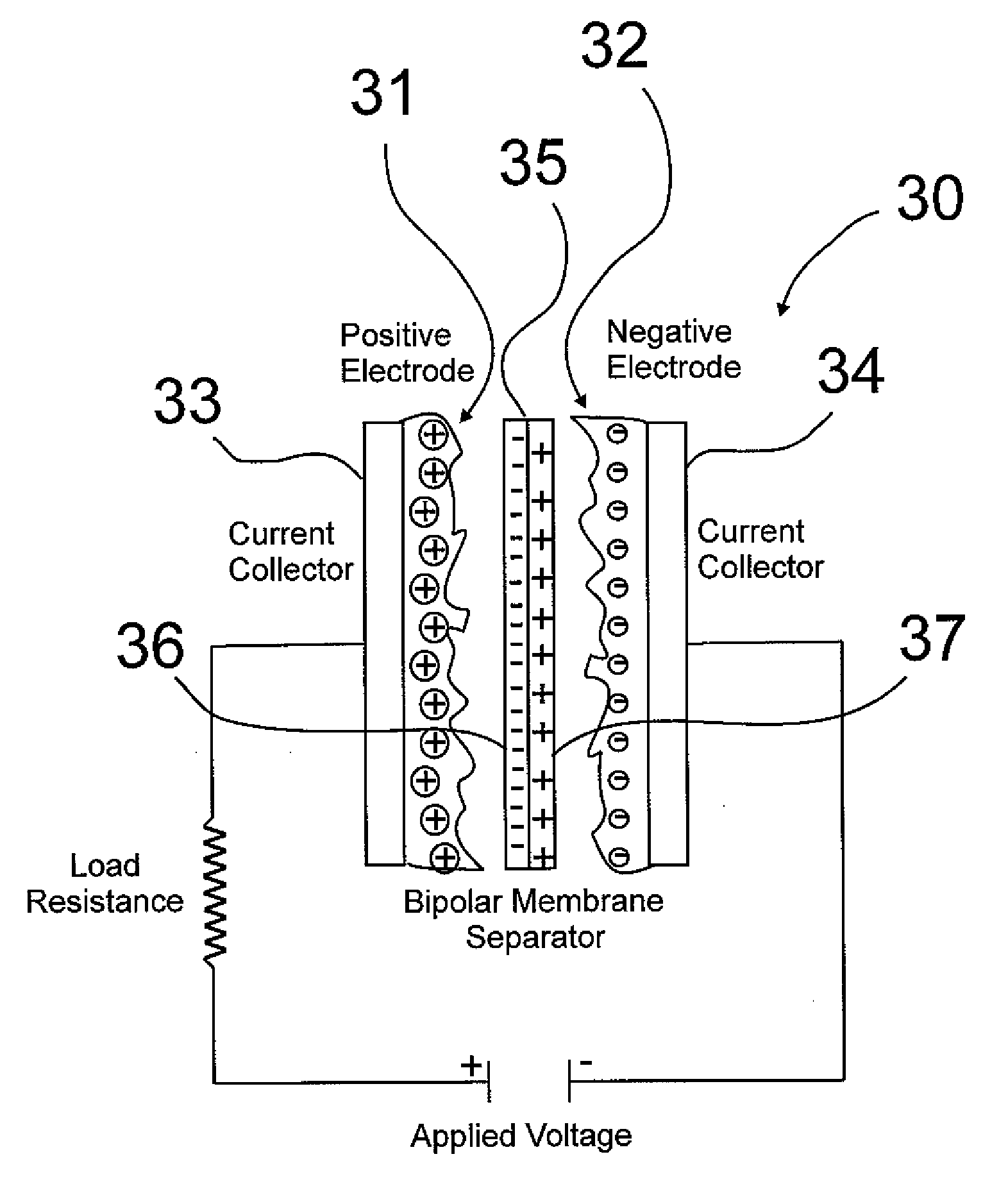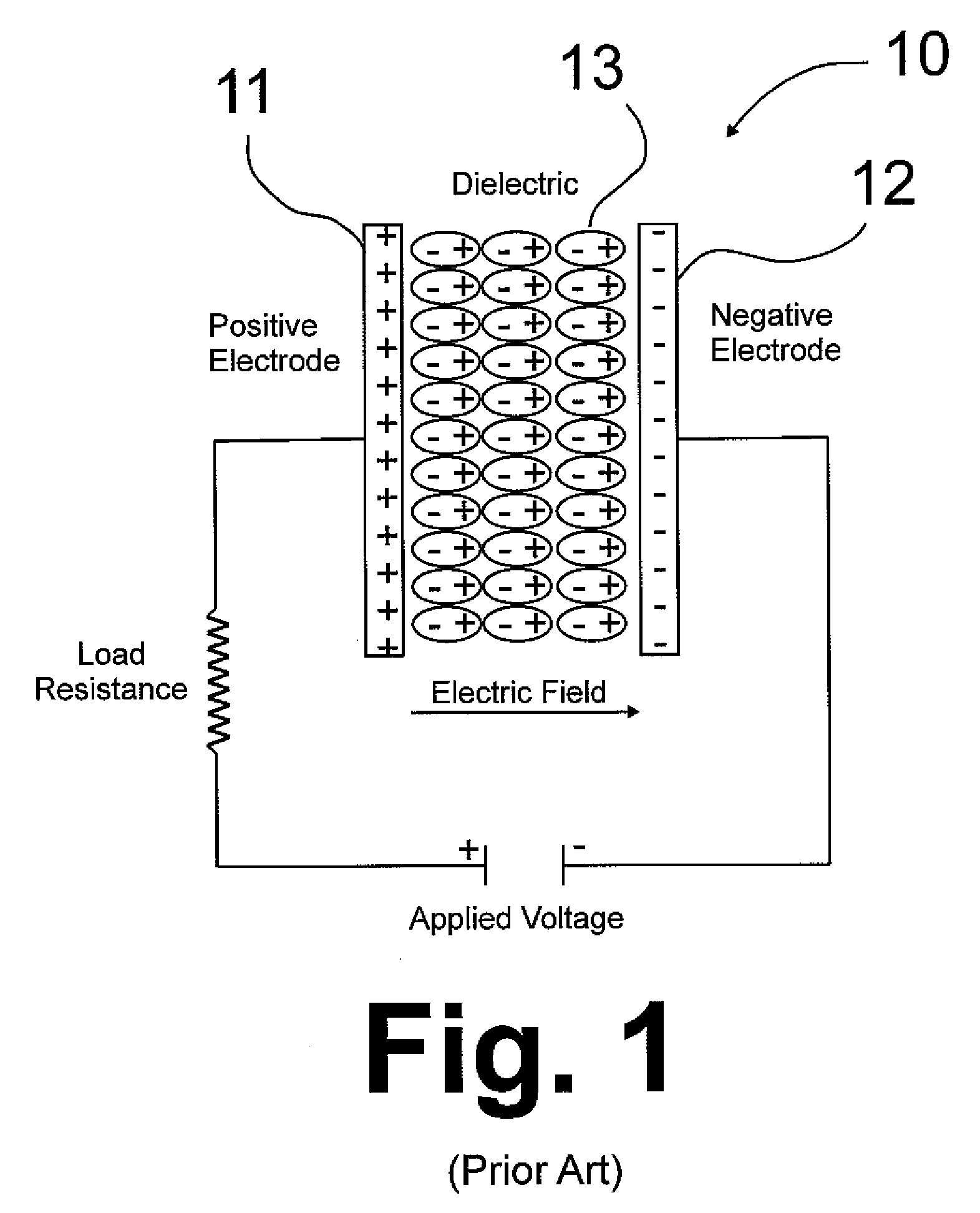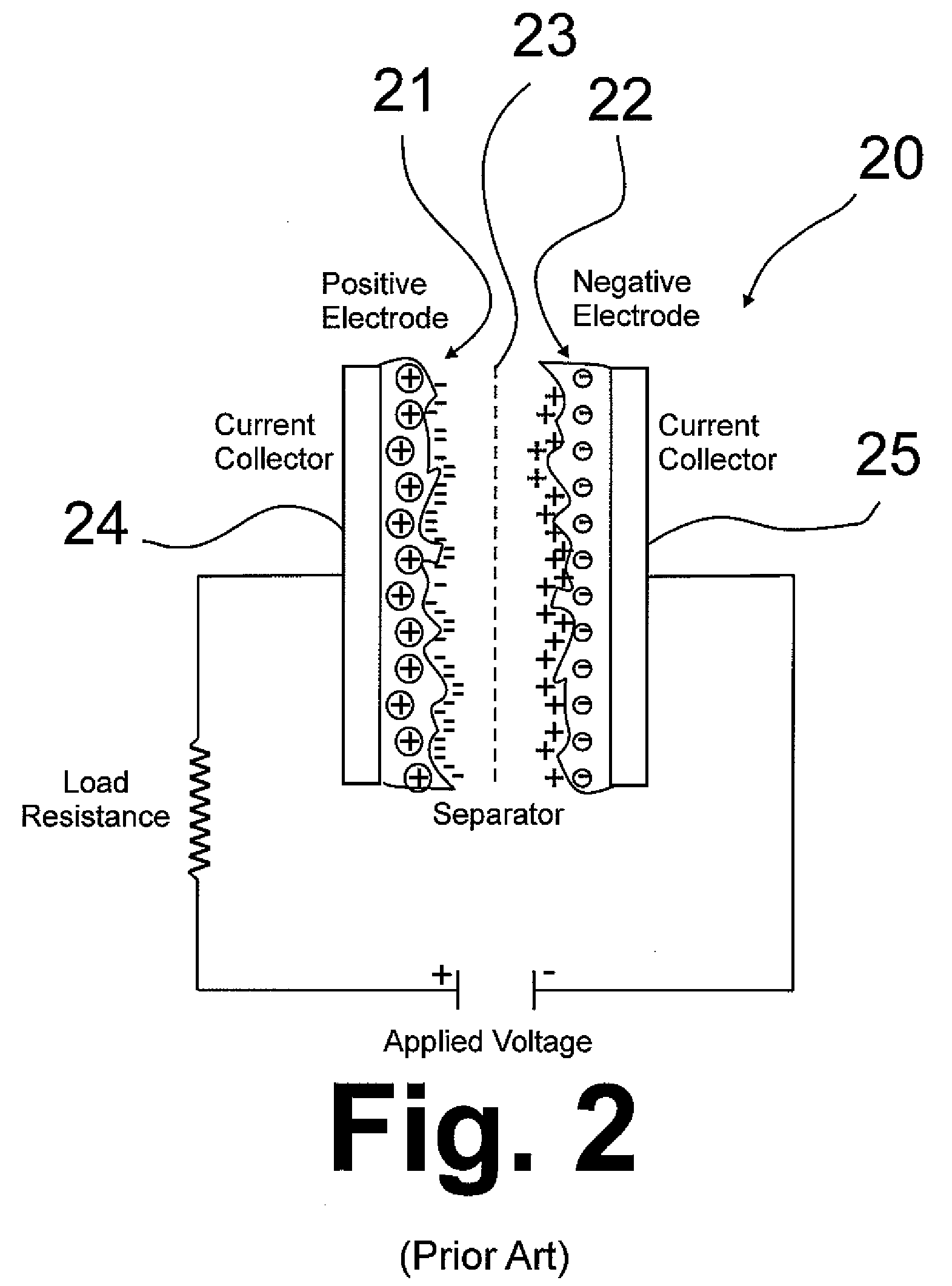Bipolar membrane for electrochemical supercapacitors and other capacitors
a supercapacitor and bipolar membrane technology, applied in the field of capacitors and supercapacitors, can solve the problems of carbon taking the place of the improved insulators, the inability of supercapacitors to deliver full charges, and the negative impact of capacitor life, so as to reduce or eliminate the self-discharge of capacitors and maintain the separation of charges
- Summary
- Abstract
- Description
- Claims
- Application Information
AI Technical Summary
Benefits of technology
Problems solved by technology
Method used
Image
Examples
example 1
Supercapacitors Without Bipolar Membranes
[0032]In this example, graphite samples were made into a slurry with isopropanol and TEFLON® solution, table cast onto aluminum foil and heat treated at 365° F. for one hour. The resulting electrode contained about 40% by weight TEFLON as a binder. The foil 41, 42 was cut into 2″ by 2″ squares and sandwiched between gasket material 43, 44 and garolite plates 45, 46, forming a capacitor 50 as shown in FIG. 5 which was tested for double layer capacitance in a press. The capacitor was composed of two identical electrodes 47, 48 facing each other and separated by a piece of manila paper 49 having a thickness of about 4 mils. One gram of tetraethylammonia-hexaflorophosphate (TEAPF6) dissolved in 10 ml of acetonitrile resulting in a TEAPF6 concentration of about 11.5% was used as electrolyte. The pressure of the press 55 was maintained at 5 psig throughout the test. Cyclic voltamograms were taken between −1 to about +1V at a scan rate of 100 mV / sec...
example 2
Supercapacitor with Bipolar Membrane
[0033]A bipolar membrane was constructed from an anion exchange membrane and a cation exchange solution by way of a method in which the anion exchange membrane, e.g. polyolefin-amine based anion exchange membrane from Tokuyama, Japan having a thickness of about 25 μm, was spray coated with a 5 wt % NAFION® solution to form a NAFION layer having a thickness of about 1 μm. After drying at room temperature for about 12 hours, the resulting bipolar membrane was soaked in an electrolyte solution containing 1 gram of TEAPF6 dissolved in 10 ml of acetonitrile for 3 hours. The soaked bipolar membrane was placed between the two electrodes using XC72 carbon in the same manner as described in Example 1 to replace the manila paper as a separator. Cyclic voltamograms were taken between −1 to +1V at a scan rate of 100 mV / sec, 50 mV / sec, and 20 mV / sec. As before, at each scan rate, four cycles were recorded. Double layer currents at zero potential were taken, av...
PUM
 Login to View More
Login to View More Abstract
Description
Claims
Application Information
 Login to View More
Login to View More - R&D Engineer
- R&D Manager
- IP Professional
- Industry Leading Data Capabilities
- Powerful AI technology
- Patent DNA Extraction
Browse by: Latest US Patents, China's latest patents, Technical Efficacy Thesaurus, Application Domain, Technology Topic, Popular Technical Reports.
© 2024 PatSnap. All rights reserved.Legal|Privacy policy|Modern Slavery Act Transparency Statement|Sitemap|About US| Contact US: help@patsnap.com










